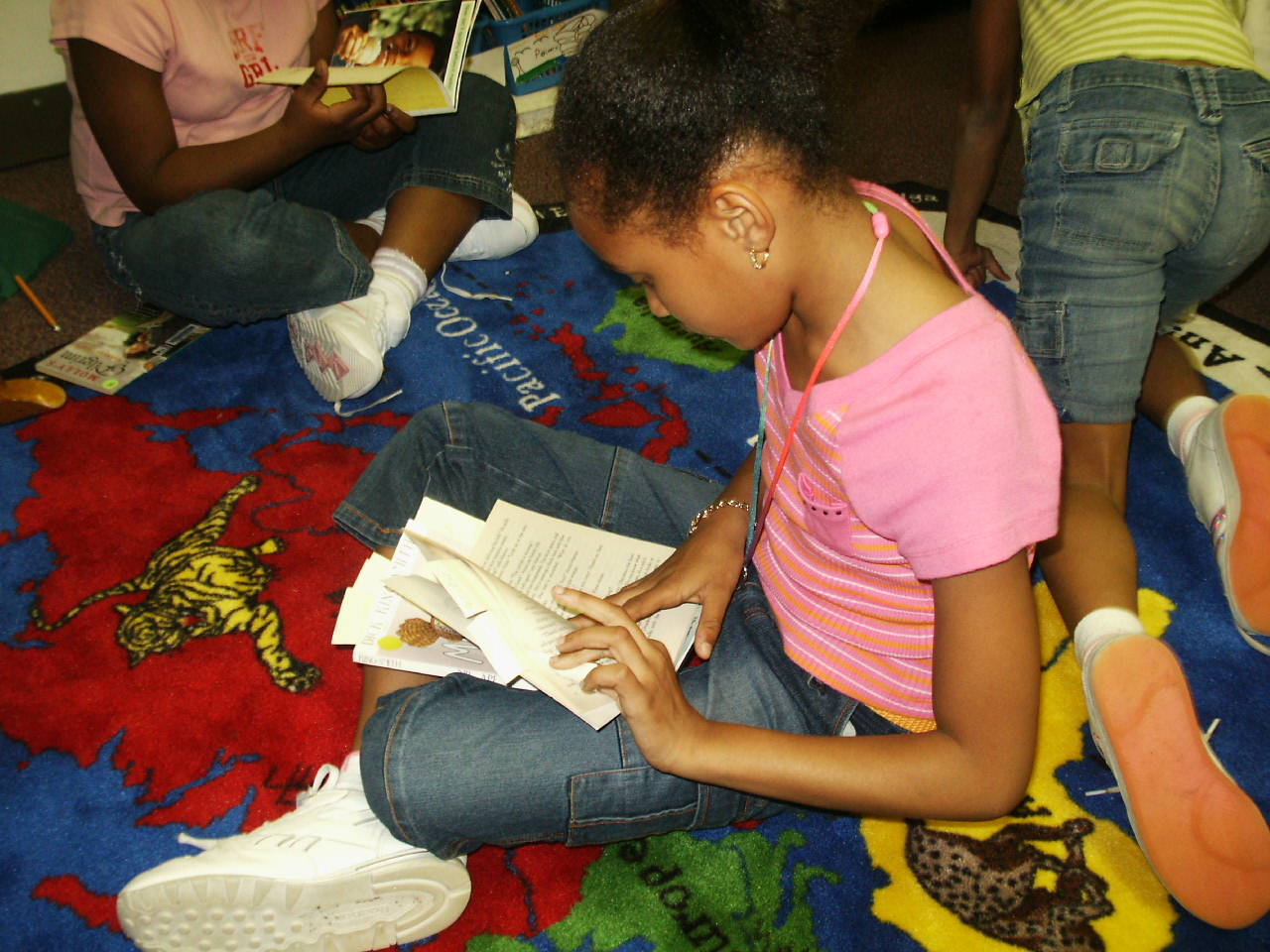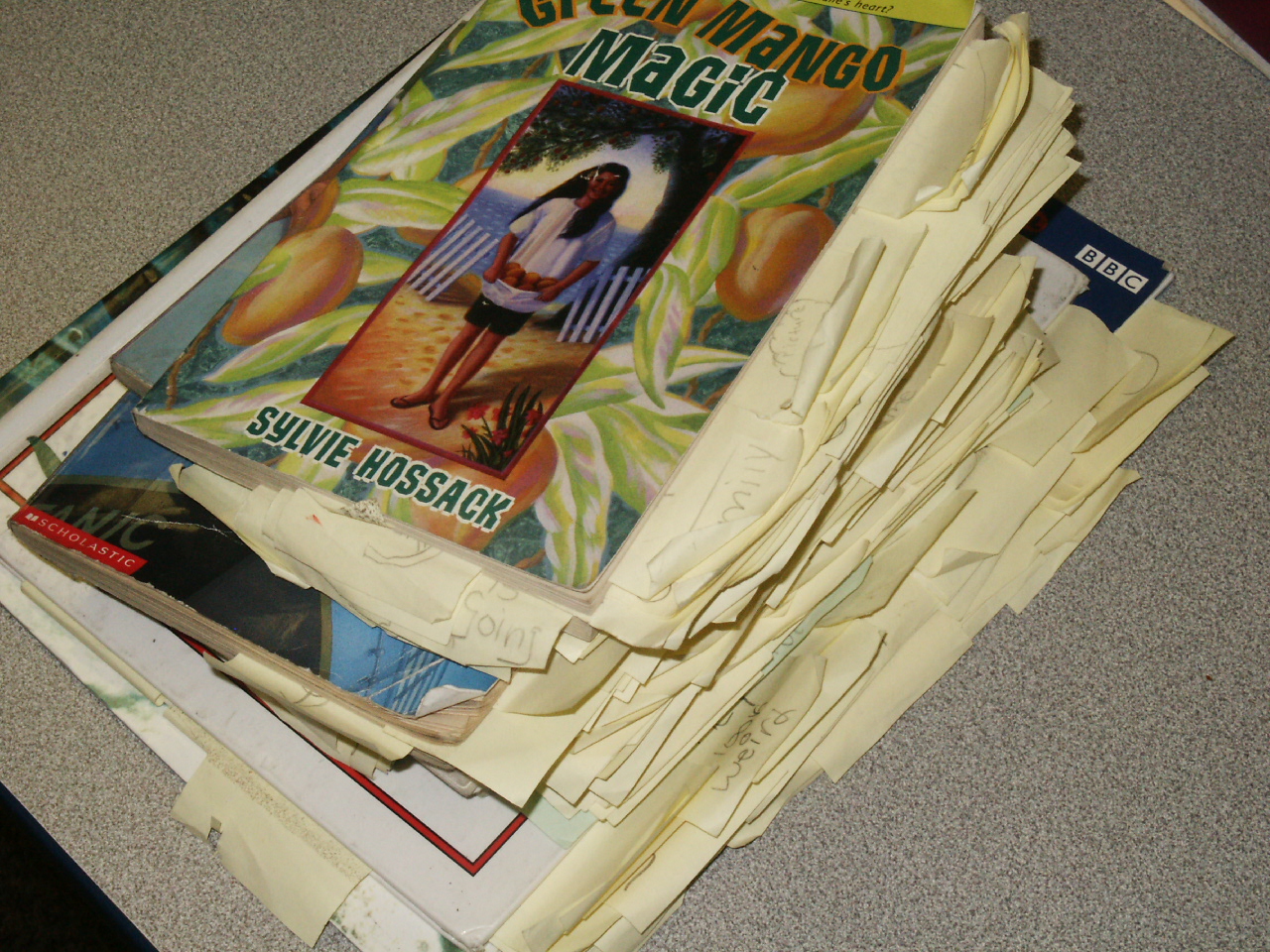
Meeting
all children’s
needs at their own level
Mishael Hittie, M.Ed.
Southfield Public Schools
There are several components to a successful reading program that allows children of different levels to work together, and yet pushes each student to do their best. Click on links below to see a video of this component in process.
1. Instructional read aloud: A shared reading time that introduces new literature at higher levels and models comprehension strategies.
2. Reading at Individual levels (reading workshop)
3. Showing comprehension: setting individual reading goals; individual conferences with teachers, writing about a book, and discussing with other students.
4. Mini-lessons: small group work with the teacher on a specific reading strategy that needs focus once a week during reader’s workshop.
5. Student-to-student testing based on teacher-provided questions. This helps both think critically about reading.
6. Completing journals on their reading.

The first thing to be taught is the reader’s workshop process. At the beginning of the year I test each child on fluency and comprehension to get a general idea of their reading level. This enables me to help them learn to identify what their Just Right level is. I do NOT tell them the reading level, they learn to identify it by how many words they are unsure of on a page. A Just Right book has 2-4 on each page, no more or less.
When children get set in this cycle, the teacher divides her time between three things during the individual reading time:
1.
Checking in with students about progress on due dates and paperwork.
2. Reading for 2 or 3 minutes with each student to help model comprehension
strategies.
3. Meeting with one small group per day to teach a lesson on a strategy
that crosses grade levels in reading
Strategy lessons in small groups.
These lessons begin after children have been reading with the teacher individually for several weeks. This allows the teacher time to identify strategies that need work. The children bring their reader’s workshop books to share how they have been working on their strategy with the group. Some examples of strategies include:
Choosing books at a 'just right' level